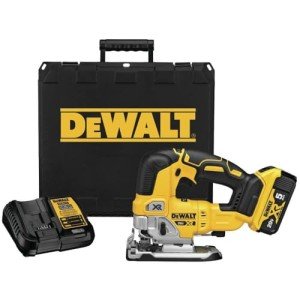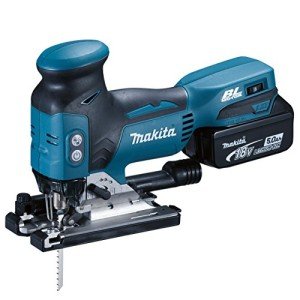Check Out: How Power Tool Sale Is Taking Over And How To Respond
페이지 정보

본문
 Power Tool Sales and Marketing Strategies for B2B Retailers
Power Tool Sales and Marketing Strategies for B2B RetailersPower tools are a staple for both professional and personal use. The demand for power tools remains at or near pre-pandemic levels despite a slowdown due to the COVID-19 epidemic that will hit in 2021.
In terms of dollar share, Home Depot leads all outlets when it comes to sales of power tools. Lowe's is second in line. Both are competing with power tools manufactured in China.
Tip 1: Create an Engagement to Brands
Many industrial products manufacturers prioritize sales over marketing. This is because a long-term sale requires a lot of back-and-forth communication and a thorough understanding of the product. This kind of communication does not lend itself to emotional consumer marketing strategies.
However, companies that make industrial equipment should reconsider their marketing strategy. The digital age has outpaced traditional manufacturing companies that rely on a few distributors and retail outlets to sell their products.
A key to selling power tools store online is brand loyalty. When a customer is loyal to a particular brand and is loyal to a brand, they are less prone to the messages of competitors. They are also more likely to buy the products of the brand they are loyal to and to recommend them to others.
You require a well-planned strategy to have an impact on the US market. This means adapting your tools to meet local needs, positioning your brand in a competitive way, and making use of distribution channels and marketing platforms. It is also crucial to work with local authorities, industry associations, and experts. You can be sure that your power tool will meet the requirements and standards of the country when you follow these guidelines.
Tip 2: Know Your Products
Retailers need to be knowledgeable about the products they sell, especially in a market which places a great importance on the quality of products. This will allow them to make informed decisions about the products they offer their customers. This information can be the difference between making a good or a bad purchase.
Knowing that a certain tool is suitable for a particular project will help you match the right tool to the needs of your customer. This will help you build trust and loyalty with your customers. It will also give you the confidence that you're providing the complete solution.
Additionally, understanding the trends in DIY culture will help you know what your customers are looking for. As an example, more homeowners are undertaking home renovation projects requiring the use of power tools. This can lead to a spike in the sale of these tools.
According to Durable IQ, DeWalt leads in power tool unit share at 16%, however Ryobi and Craftsman brands have seen their share decline year-over-year. However the fact that sales on both stores and online are growing.
Tip 3: Offer Full-Service Repair
The most frequent reason why for a person to make a power purchase is to replace one that has failed or to embark on a new project. Both of these tools offer the possibility of upselling or adding on sales.
According to the Home Improvement Research Institute (HIRI) 2020 Tracking Study of Power Tools and Accessories 35 percent of all power tool purchases are the result of planned replacements. The customers might require additional accessories or upgrade to a higher-performing model.
Whether your customer has experience in DIY or is new to the hobby, they will have to replace their carbon brushes, drive cords, and the power cords on their power tools in time. Keeping up with these essentials will help your customer get the most value from their investment.
Technicians take into consideration three main aspects when making power tool purchases applications, how it will be powered and safety. These aspects help technicians make informed choices about the best quality tools tools to use in their repairs and maintenance tasks. This allows them to optimize the performance of their tools and lower the cost of ownership.
Tip 4: Stay up-to-date with the latest technologies.
For instance, the most recent power tools feature smart technology that improves the user experience and differentiates them from other brands that still depend on old-fashioned battery technology. Wholesalers of B2B that carry and sell these devices can increase sales by focusing on professional and tech-savvy contractors.
For Karch the company, which has more than three years of experience and a 12,000 square-foot tool department, staying current with the latest technology is vital. He says that manufacturers are constantly changing their designs for their products. "They used to hold their designs for five or ten years, but now they alter their designs every year."
In addition to embracing the most recent technologies, B2B wholesalers should also be looking to improve existing models. For instance, by adding adjustable handles and lightweight materials, they can lessen the fatigue caused by prolonged use. These features are crucial for many professional contractors who use the tools over a long period of time. The industry of power tools is divided into professional and consumer groups and this means that the biggest players are constantly improving their designs and developing new features to appeal to more people.
Tip 5: Create a Point of Sale
The online marketplace has transformed the power tools prices tools market. Data collection methods have improved, allowing business professionals to gain a better understanding of the market. This helps them develop more efficient inventory and marketing strategies.
By utilizing data from the point of sale (POS) You can track DIY projects your customers undertake when buying power tools and accessories. Knowing what projects your customers are working on allows you to offer upsells and additional products. It helps you anticipate your customers' needs to ensure that you have the right products in your shelves.
You can also utilize transaction data to determine trends in the market, and then adapt production cycles accordingly. You can, for example, use this data to monitor fluctuations of your retail partners' and brand's market shares. This allows you to align your product strategies to consumer preferences. POS data can also be used to optimize levels of inventory, reducing the risk of stocking up. It can also help you to assess the effectiveness of promotions.
Tip 6: Be a good neighbor
Power tools are a complicated, high-profit market that requires a significant amount of marketing and sales efforts to stay in the game. In the past, getting a competitive advantage in this market was achieved through pricing or positioning products. However, these tactics are no longer effective in today's omnichannel environment where information is readily shared.
Retailers who concentrate on service are more likely to retain customers and build brand loyalty. Mike Karch, the president of Nue's Hardware and Tools, located in Menomonee Falls, Wisconsin, runs a 12,000 square-foot power tool department. The department was initially home to a variety of brands. However when he spoke to contractors, he discovered that they were loyal to their preferred brand.
Karch and his staff ask their customers what they would like to do with the tool before showing them the options. This gives them the confidence to recommend the appropriate tool for the job, and also creates trust with customers. Customers who are familiar with their product are less likely than others to blame the store for the failure of a tool for the job.
Tip 7: Be a guru in customer service
The market for power tools has become a very competitive area for hardware retailers. People who have had the most success in this market tend to have a strong commitment to a brand rather than simply carrying a sampling of manufacturers. The size of the space that a retailer needs to devote to the category may be a factor in the number of brands it can carry.
Customers frequently require assistance when they come in to purchase a power device. Sales associates can offer professional advice to customers looking to replace a broken tool or are planning an upgrade project.
Mike Karch, president of Nue's Hardware and Tools in Menomonee Falls, Wisconsin, says his sales staff is trained to ask the right questions to help make a sale on power tools. He says they start by asking the buyer what he or she plans to do with the product. "That's the way to determine the type of tool they need," he says. Then, they inquire about the experience of the customer with different types projects and the project.
Tip 8: Make a Point of Warranty
The warranty policies of the power tool makers differ greatly. Some are fully comprehensive, while others aren't as generous or refuse to cover certain parts of the tools at all. Before purchasing a tool, it's important that retailers know the differences. Customers will only buy tools from companies that provide a warranty.
Mike Karch, president of Nue's Hardware and Tools in Menomonee Falls, Wisconsin, has a 12,000 square-foot power tools department as well as an repair shop in-house that handles 50 kinds of tools. He has observed that many of his clients are loyal to a particular brand. So, he chooses to carry a limited number of brands instead of trying to carry a variety of products.
He is also pleased that his employees are able to meet with vendors in person to discuss new products and exchange feedback. This type of personal interaction is crucial because it helps to establish trust between the store and the customers. Good relationships with suppliers could even result in discounts on future purchases.

- 이전글비아그라구입【KKvia.Com】【검색:럭스비아】비아그라 구매 처방전 필요없는 비아그라 시알리스, 온라인약국 25.01.09
- 다음글10 Large U Shaped Sectional That Are Unexpected 25.01.09
댓글목록
등록된 댓글이 없습니다.